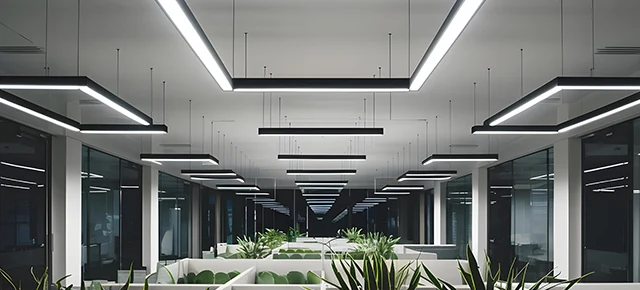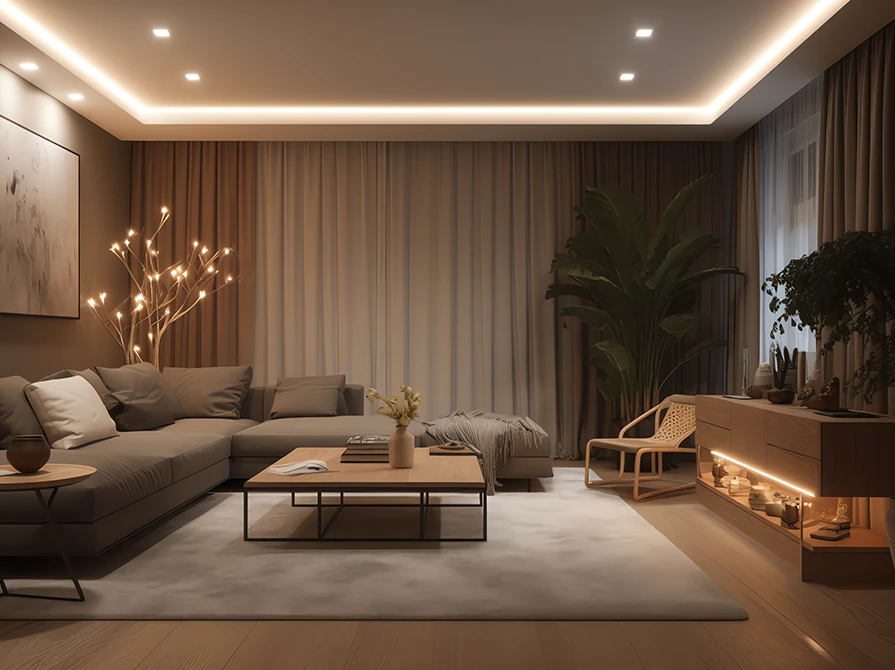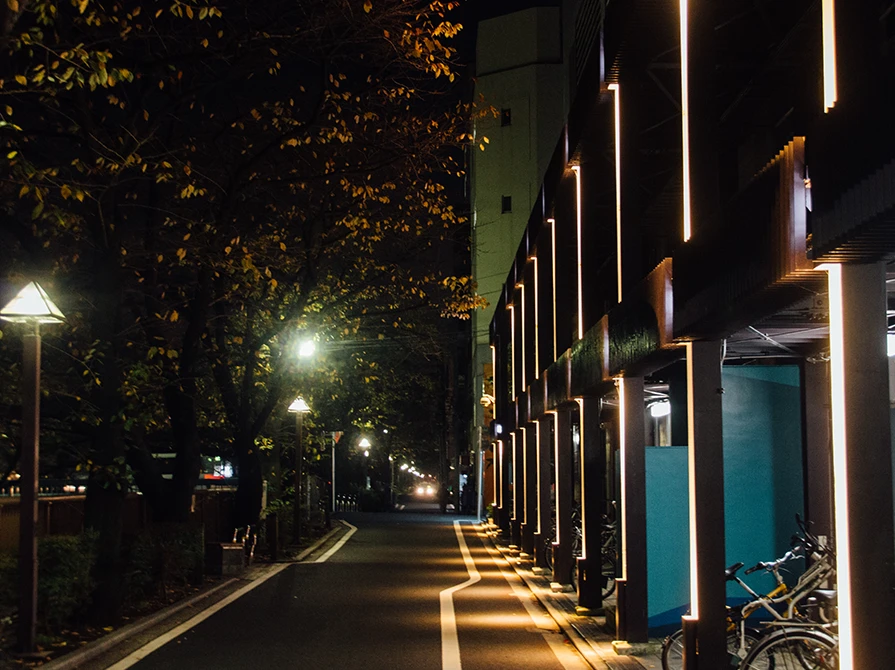


In the ever-evolving landscape of lighting design, the integration of interactive elements has emerged as a groundbreaking and captivating trend. Interactive lighting transcends the traditional boundaries of illumination, inviting users to become active participants in shaping the ambiance of a space. This blog will delve into the realm of interactive lighting, exploring the fusion of technology and design that engages users in smart and playful ways.
Interactive lighting goes beyond the passive role of illumination. It involves the incorporation of sensors, controllers, and responsive technologies that enable lights to react to external stimuli. This can include user movements, sounds, touch, or even environmental factors, creating a dynamic and engaging lighting experience.
The advent of smart technologies has been a driving force behind the rise of interactive lighting. Connected systems, often IoT (Internet of Things)-enabled, allow lights to communicate with each other and respond to user inputs or predefined triggers.
Transforming spaces into responsive environments involves embedding sensors that detect various stimuli, such as motion, temperature, or sound. As users interact with the environment, the lighting system responds in real time, creating an immersive experience.
Artists and designers are increasingly incorporating interactive lighting into installations. These creations respond to user actions, encouraging participation and blurring the lines between the observer and the observed. Examples include interactive light sculptures, installations in public spaces, or even immersive art exhibits.
In the realm of smart homes, interactive lighting has become quite common. Systems that can be controlled via voice commands, mobile apps, or gesture recognition allow users to personalize their lighting environments. Mood lighting, color-changing options, and dynamic scenes contribute to a customized and interactive home lighting experience.
Gesture control technology has opened up new possibilities for interactive lighting. By recognizing and interpreting hand movements or gestures, lighting systems can be manipulated without physical touch. Gesture control finds applications in various settings, from commercial spaces to homes. In retail environments, users can interact with products through gesture-controlled lighting displays. In homes, waving a hand can adjust the brightness or color of lights, creating an intuitive and playful experience.
Sensors play a crucial role in enabling interactive lighting designs. Whether it's infrared sensors, motion detectors, or touch-sensitive surfaces, these technologies facilitate direct interaction with the lighting environment. In public spaces, sensor-driven lighting can respond to the movement of people, creating a dynamic and engaging atmosphere. In educational settings, interactive lighting can enhance learning experiences by responding to student interactions or adapting to different activities.
Sound-responsive lighting introduces an auditory dimension to the interactive experience. Lights can synchronize with music beats, respond to ambient noise levels, or even create visual representations of sound patterns. Nightclubs and entertainment venues leverage sound-responsive lighting to enhance the overall sensory experience for people. In residential settings, sound-responsive lighting systems can turn a living room into a dynamic audiovisual space during gatherings or events.
Interactive Displays
In retail settings, interactive lighting displays can capture the attention of shoppers and create immersive brand experiences. Lights that respond to product interactions or user movements contribute to a memorable and engaging shopping environment.
Smart Visual Merchandising
Interactive lighting enhances visual merchandising by highlighting specific products or sections based on customer interactions. This not only adds a dynamic element to the retail space but also guides customers through a curated shopping journey.
Dynamic Atmospheres
Hotels, restaurants, and bars can benefit from interactive lighting to create dynamic atmospheres. Lights that respond to the time of day, customer movements, or even ambient noise levels contribute to a memorable and personalized guest experience.
Interactive Entertainment
In entertainment venues, interactive lighting can be integrated into performances or events. From concerts to theatrical productions, lighting that responds to the performers' movements or audience reactions adds an extra layer of excitement.
Enhanced Learning Environments
Interactive lighting in educational settings contributes to enhanced learning environments. Lights that respond to student activities, adapt to different teaching modes, or create dynamic visualizations can improve engagement and foster a conducive learning atmosphere.
Creative Expression
Integrating interactive lighting into art studios or creative spaces allows students to explore the intersection of technology and artistic expression. This hands-on approach encourages experimentation and innovation.
Smart Home Integration
The residential sector has embraced interactive lighting through smart home integration. Users can control lighting scenes, colors, and intensity through voice commands or mobile apps, providing a customizable and convenient living experience.
Ambient Experiences
In residential interiors, interactive lighting contributes to ambient experiences. Lights that respond to daily routines, moods, or specific activities create a harmonious and personalized living environment.
The integration of biometric data, such as facial recognition or physiological indicators, holds promise for the future of interactive lighting. Lights could respond to users' emotions, creating personalized and emotionally intelligent environments. In public spaces, biometric interactions could contribute to enhanced safety measures by adjusting lighting based on crowd movements or detecting anomalies in behavior. In residential settings, lights could adapt to users' stress levels or relaxation needs.
The merging of interactive lighting with augmented reality presents exciting possibilities. AR technologies could overlay digital elements onto physical spaces, and interactive lighting would seamlessly integrate with these virtual components. In retail, AR-integrated lighting could enhance the try-on experience for customers, allowing them to visualize how garments or products look under different lighting conditions. In architectural design, AR could enable architects and designers to preview interactive lighting concepts in real time.
The future of interactive lighting is likely to emphasize sustainability and energy efficiency. Integrating renewable energy sources, optimizing power consumption, and utilizing eco-friendly materials will be key considerations. Sustainable interactive lighting designs could be implemented in urban planning projects, public spaces, and commercial buildings, contributing to energy conservation efforts. Smart algorithms could optimize lighting schedules based on natural daylight availability, further reducing energy consumption.
Interactive lighting represents a paradigm shift in the way we perceive and engage with illuminated spaces. From retail environments to residential interiors, the fusion of technology and design has opened up new avenues for creativity, personalization, and immersive experiences. As interactive lighting continues to evolve, pushing the boundaries of innovation, it not only transforms physical spaces but also redefines the relationship between individuals and the environments they inhabit. In the dynamic intersection of light and interaction, the future holds boundless possibilities for creating engaging, smart, and playful designs that captivate the imagination of users worldwide. Get in touch with us to know more about how Wipro Lighting Solutions can help you with your interactive lighting requirements.







